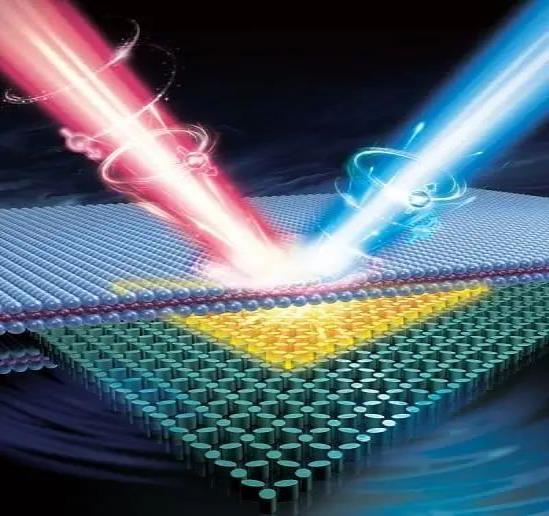A new type of laser is available, which may provide electron and photon spins for optoelectronic devices
Recently, an article titled "Spin-valley Rashba monolayer laser" was published in the recent journal Nature Materials. Researchers at the Israel Institute of Technology said in the article that they had developed an atomic-level spin-optical laser. Such a coherent, controllable spin-based laser with single atomic layers can study coherent, spin-dependent phenomena in classical and quantum states, bringing new opportunities for research and optoelectronic devices utilizing electron and photonic spins.
To this end, they incorporated the WS 2 monolayer into heterostructured microchambers that support a high Q photon spin-valley resonance. The spin-valley mode is generated by the photonic Rashba-type spin splitting of the bound states in the continuum.
Rashba monolayer laser (Rashba monolayer laser) has inherent spin polarization, high space and temporal coherence, as well as symmetry, robust characteristics to realize the valley coherence of WS 2 monolayer under arbitrary pump polarization at room temperature. It does not require magnetic fields or low temperatures.
This new laser can drive the development of coherent spin-optical light sources for both classical and non-classical techniques and for optoelectronic devices using both electronic and photonic spins.
"The spin-optical light source combines photonic modes and electronic transitions, thus providing a way to study the spin information exchange between electrons and photons and to develop advanced optoelectronic devices."Said Kexiu Rong, who led the study," The prerequisite for constructing these sources is to improve the spin degeneracy between two opposite spin states in the photon or electron part.”
Professor Erez Hasman, head of the Atomic Photonics Laboratory, said his team has long been committed to using photon spin as a tool to control electromagnetic waves."In 2018, we were attracted to the valley pseudospin in 2 D materials, and thus began a long-term project to study the active control of atomic-level spin-optical light sources in the absence of a magnetic field.”
The researchers first attempted to develop coherent geometric phase picking from individual valley excitons using a non-local Berry phase defect mode. However, due to the lack of strong synchronization mechanisms between the excitons, they are unable to solve the realized coherent addition of multiple valley excitons for the Rashba monolayer light source.“
This question inspires us to think about the high Q photon Lashba model."Hasman said."With the innovation of new physics methods, we implemented the Lashba monolayer laser.”
This new laser is realized by a coherent, spin-dependent interaction between a single atomic layer and a transverse confined photon spin lattice supporting a high Q spin-valley state. To realize high Q spin splitting states, we constructed photon spin lattices with different symmetries. They constructed an inversion asymmetric kernel and an inversion asymmetric envelope and integrated it with the WS 2 monolayer. The inversion-asymmetric lattice has two key properties. The first feature is a controllable, spin-dependent, inverted lattice vector. This vector divides the spin-degenerate band into two spin-polarization branches in momentum space, which is called the photonic Lashba effect.
The second feature is a pair of symmetry-enabled quasi-bound states in a high Q continuum, the ± K photon spin-valley states at the band edge of the spin-splitting branch. Together, these two states form the coherent superposition states with equal amplitudes.
"We use the WS 2 monolayer as a gain material because this direct bandgap transition metal didoped family has a unique valley pseudospin, which has been widely studied as an alternative information carrier in valley electronics," said Professor Elad Koren, head of the Nanoelectronic Materials and Devices Laboratory."Specifically, their ± K'valley excitons radiate as an in-plane spin polarization dipole emitter and can be selectively excited by spin polarization light according to the valley contrast selection rule, thus actively controlling the spin optical light source without a magnetic field."In a monolayer integrated spin valley microcavity, the ± K'valley exciton is coupled to the ± K spin valley states due to polarization matching. A spin-optical exciton laser is realized at room temperature by strong light feedback.

Schematic diagram of the spin-valley Lashba monolayer laser. The spin-valley optical microcavity is constructed by connecting the inversion asymmetry (the yellow core region) and the inversion symmetry (the cyan envelope region) to the photon spin lattice. With the photonic Rashba-type spin splitting of bound states in the continuum, this heterostructure is able to selectively laterally restrict the photon spin valley states appearing in the nucleus to achieve a high Q resonance. Therefore, a coherent, controllable, spin-polarized laser (red and blue beams) is achieved from the valley excitons in the merged WS 2 monolayer (and purple region) 。
Meanwhile, the ± K'valley exciton with initially no phase correlation is driven by the laser mechanism to find the minimum loss state of the system. This causes the ± K ′ valley exciton to re-establish the lock-in correlation according to the opposite geometric phase of the ± K spin-valley state.
The valley coherence driven by the laser mechanism requires low temperature to suppress interval scattering. Furthermore, the minimum loss state of the Lashba monolayer laser can be tuned by a linear or circular pump polarization to satisfy or break the minimum loss state. This provides a way to control the laser intensity and spatial coherence.







